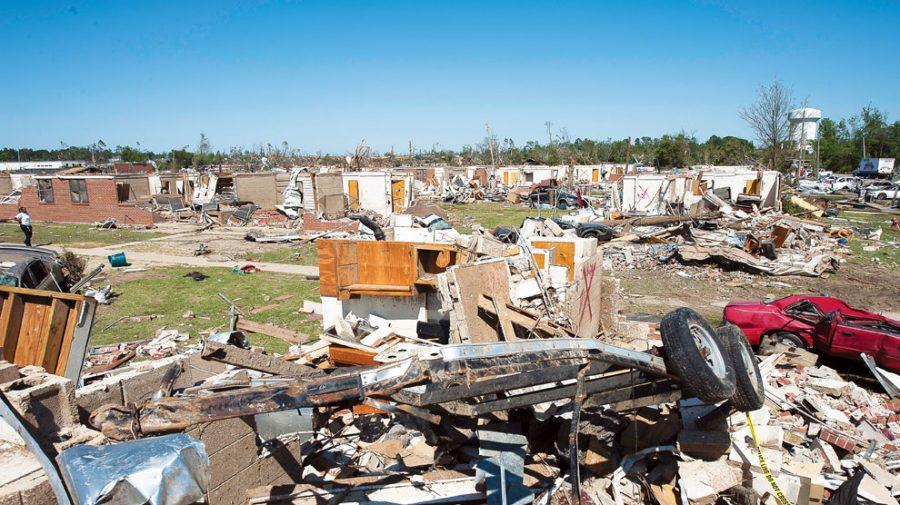Just eight days after the April 27 tornado struck Tuscaloosa, the city’s mayor, Walt Maddox, signed an executive order that created the Tuscaloosa Forward Task Force, a group of community members and professional liaisons to assist with plans for rebuilding the city.
A key part of the Tuscaloosa Forward plan is a proposed greenway, to be called the Path of Remembrance and Revitalization, which will run 5.9 miles along the tornado’s path of destruction.
“The April 27 tornado through Tuscaloosa forced a new geography for the city across traditional boundaries and neighborhoods,” the proposed plan reads. “Along its path, the tornado passed through industrial areas, commercial corridors and residential neighborhoods alike, destroying homes, businesses, schools, churches and infrastructure.
“During the Tuscaloosa Forward planning process, citizens from across Tuscaloosa coalesced around the big idea to transform the path of destruction left by the tornado into a path of remembrance and revitalization, an opportunity to reconnect and reshape the city for the better with a greenway that links neighborhoods, benefits surrounding homes and businesses and memorializes the tragic and transformative event.”
The group was also assigned tasks that involved looking into housing, economic development, infrastructure and other quality of life initiatives.
Maddox said members of the task force were also to engage the public in a very transparent and meaningful way in order to get their ideas of what the future should plans should be.
Maddox said that after Tuscaloosa Forward held two town hall meetings that boasted a combined attendance of 1,300 people and an ongoing virtual town hall on the group’s website that featured over 7,000 different users, the task force presented a plan to him in mid-July that was essentially the recommendations of the citizens themselves.
“There are some people who are very concerned that the city is moving too far and too fast, and that point has a lot of merit, but this situation requires us to be deliberative yet be swift because we’ve got to lay out a plan that allows for rebuilding of our city in such a way that honors all those who lost so much,” Maddox said.
Last Monday, amidst the protests of numerous local business owners citing the plan’s lack of direction, the Tuscaloosa Planning and Zoning Commission voted to recommend Maddox’s revised version of the plan be adopted.
In regards to land use, the Tuscaloosa Forward plan calls for the city to create compact village centers that are unique destinations and focal points of activity for surrounding neighborhoods. It also includes ways to both preserve and revitalize established neighborhoods, as well as ways to support design and construction that is economically viable to develop and affordable to rent, own and maintain.
The plan also goes into detail about how the city can create affordable housing, provide sustainability education for residents and promote healthy lifestyles.
On Aug. 30, the Tuscaloosa City Council will vote on Maddox’s latest draft of Tuscaloosa Forward.
Fast facts:
Seven Big Ideas of Tuscaloosa Forward
1) Greenway – pedestrian walkway and greenway running the length of the tornado’s destruction in Tuscaloosa
2) Connected Neighborhoods – improve access and mobility between different areas
3) Village Centers – rebuild communities stronger than before while preserving unique qualities
4) Coordinated Facilities and Public Utilities – envisions planning and coordinating the rebuilding of these facilities in a way that encourages partnerships and mutual benefit between different institutions
5) Model Neighborhoods – rebuild entire neighborhoods where communities can flourish
6) Revitalized Corridors – strengthen the economic vitality of the community, provide needed services and
amenities, better connect different areas of the city, improve walkability, and integrate surrounding neighborhoods.
7) Distinct Districts – rebuild using distinct characteristics to allow districts to thrive and sustain themselves in the future







